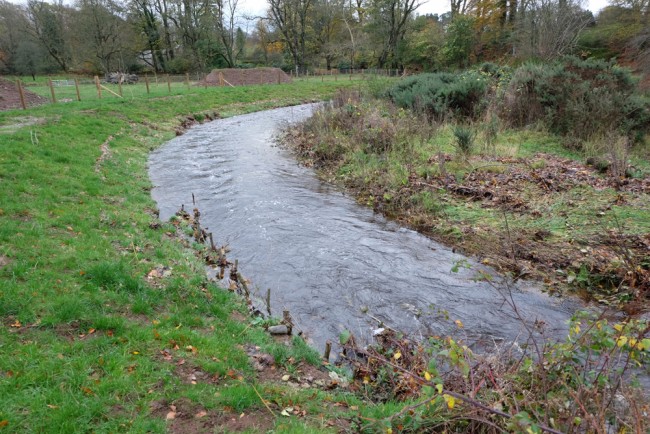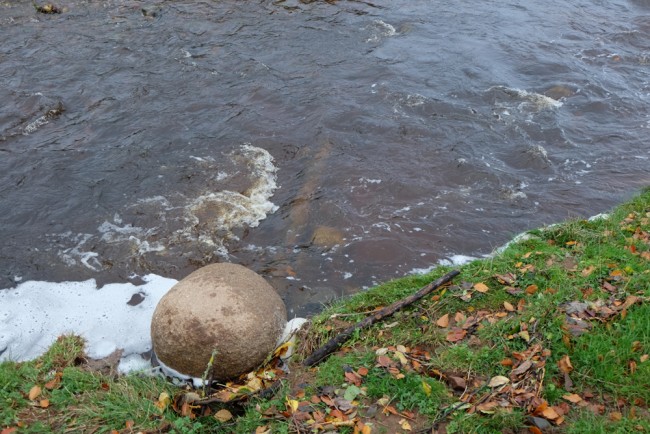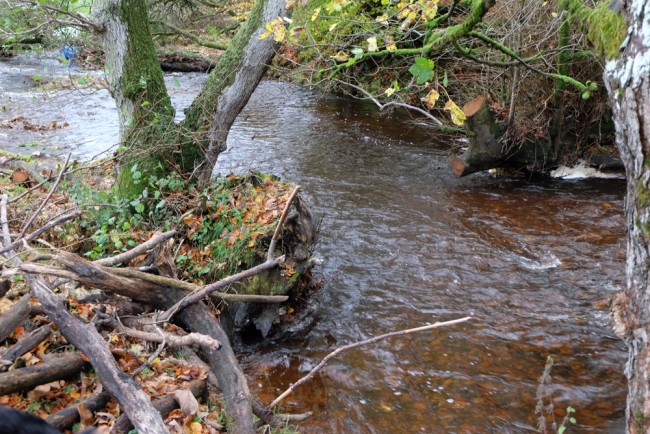Following our green engineering work and fencing on the Culroy Burn earlier this summer, we had to wait some time for rain to swell the burn and test our efforts.
This morning I returned to the burn to see how our green bank works performed at the start of September were holding up. In the last 2 weeks, the heavens have opened and the burn has constantly been in spate. Water levels certainly have been high at times as is evident by the trash line in the photo below.

Just over 2 months since completion and the turves have knotted well despite the drought conditions and the banking appears to be quite stable. The trash line reveals the maximum height that the water reached a day or two ago.
On the whole I’m very pleased with the results I saw today. Unfortunately a couple of the log deflectors had ripped out with the force of water but most remained in place and working well, turning the flow off the bank (thus reducing erosion). The turves that we relaid at the end of the job had knitted in well and were holding the bank together and as the roots develop, greater erosion resistance will be achieved. The willow spilling also appears to have worked well, protecting the banks from erosion at key points against strong flows. Once these willows have rooted and grown a bit, they will also provide shade and cover for fish and roots should trail in the burn offering perfect refuge from predator birds. Leaf litter will help increase productivity and increase invertebrate numbers.

This upstream facing log deflector is subtly turn the force of the flow from the bank, thus protecting it from erosion
Trees that snagged debris and caused a build up of coarse sediments or deflected the flow were pruned, and the river has started moving some of the larger build up of deposits once again. This should help prevent the channel braiding and widening in future. The fences will provide good buffers from grazing livestock, excluding them from the water course and improving water quality and allow the sward to develop proper, knitting the banks together with deeper roots than when grazed repeatedly.

Trees that jammed debris and led to deposition and erosion were removed and the burn can again redistribute coarse sediments.
I’m very encouraged by what I saw and we will learn from our mistakes. Hopefully next summer we will be able to correct any failures and watch this site develop.


